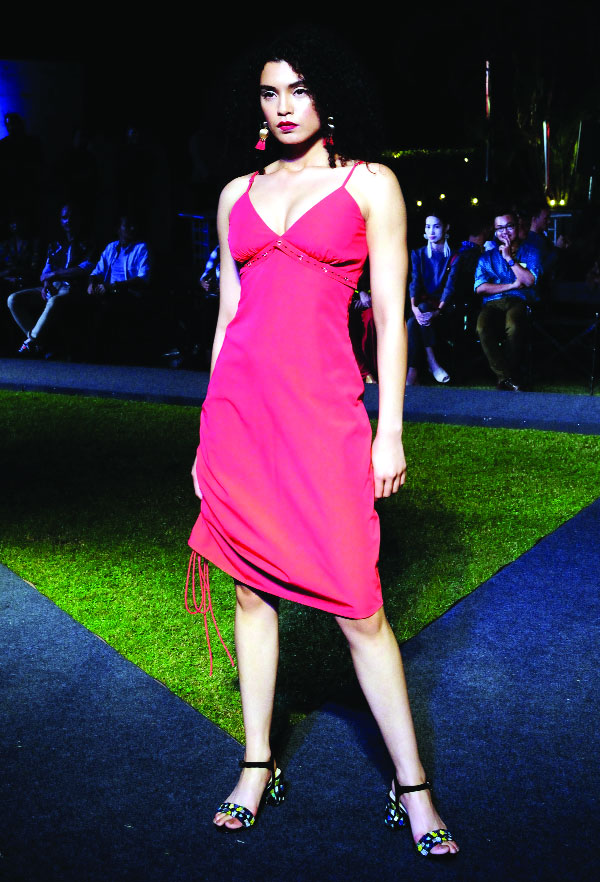Creating a fashion wave in Copenhagen, Nixon Bui’s Scandinavian designs were analysed by Chahal Mittal. She explored how the culture of Arunachal Pradesh and tribal motifs influenced the work of Bui.
When studying at a business school didn’t quite fit into his future dreams and ambitions, Nixon Bui decided to shift to a design school in Copenhagen. So when he launched his label, tribal motifs and international designs —which seem like the sun and the moon — merged to bring together both his background and education. Deriving inspiration from Danish designs, which are one of his biggest fascinations, and minimal Scandinavian aesthetics, his brand signifies the fusion of the two with the accents of tribal details from the Northeast India.
Fashion is all about style and silhouettes. Through various textiles, fabrics and blends, a design is brought to the forefront — each one of it is distinct from the other. And Bui believes that he is different from other contemporary fashion brands as such a blend has never been experimented with before. This is what makes his designs stand out among the other contemporary fashion cultures. He says, “At times, minimal designs can get so isolated that they lack connection and warmth. Here, we give soul and spirit to minimal design lovers.”
While he is currently creating waves in Denmark, he believes he still has miles to go as he calls himself “a struggling” designer. “When I started I had zero knowledge about the fashion industry. Also, designing and figuring out the business aspect of a brand are two different things but I followed it, because I absolutely loved it. The earlier the designers figure it out, the better it is for them.”
Designs, which are known for their wearability, are the ones that usually capture the market. Bui has a similar approach to designing: “I have always seen fashion and style as something wearable yet strong and bold. Something which is a little unique without screaming ‘look-at-me!’ People should look back at you twice with delight.”
Along with the wearability, he also maintains the sustainability factor in equal proportions through an eco-friendly approach. Sticking to the values of his tribal culture, he believes that “we are enormously dependent on nature.” Hence, sustainability is a natural act of design or the business process. He says, “I use a lot of natural fabrics for my designs and at times I use organic or even left-over fabrics. Sometimes, I even recycle to minimise wastage and contribute a little to sustainability.”
From Urban Tribal to Arunachalee, the names and ideologies behind his collections always give away an Indian touch. Bui calls it a “retrospective glorification” of his culture as he finds his identity and childhood highly inspiring. “A lot of my designs has some or little influence from my tribal background. The motifs in my designs hold great significance for me because of the memories attached to them and their profound meaning. But sometimes it’s good to be silent and let the buyers interpret their own meaning. Because then it becomes a collaborative art,” says he.
More Indians are moving towards accepting global fashion trends and international style. Bui says, “It’s about what information they consume, how they see and wear fashion which they see along with their individuality. I especially like this in India because this country is so vivid and diverse. Street style here is just another realm of fashion.”
Bui does not see fashion as being limited to just clothes. It rather is “a much wider concept that’s narrowed down to only clothes and accessories. What you see in fashion is a reflection of what is happening around you. It seems unfair to compare Indian fashion scene with that of the Western.” For him, the diverse and subjective nature of fashion is what makes all the difference.
He talks about evolution of the Indian fashion, “I do believe in evolving but I am very sure something this big as fashion will take its own course. This cannot be orchestrated and I am very excited and look forward to seeing how Indian fashion will evolve in coming years. You all should also be very excited.”
While the brand mainly focusses on the street fashion for men, the designer sees women’s fashion in two different ways. One — where women experiment more with their looks and fashion choices, and care about trends and want to feel updated. Second — where women simply don’t care about trends but just the comfort and practicality. However, he says, “The common thing between both the scenarios is that women these days are increasingly making their own choices. This style image that they want to be perceived in, to me, is empowerment.” Through his collection, he “thinks about modern femininity, how women are redefining what it means to be feminine, and how they present that in their fashion choices.”
The designer’s approach was similar when he recently showcased his designs at the Embassy of Denmark in India as the Spring/Summer 2019 collection. The collection celebrated everyday modern women; “strong and chic, effortless yet refined.” With an array of shades of grey and “a colour very central to Scandinavian design,” he had built other designs with accents of red and green which are more traditional to his state, Arunachal Pradesh. An amalgam that seems so disparate yet comes together as one organic whole.
Writer: Chahak Mittal
Courtesy: The Pioneer








 OpinionExpress.In
OpinionExpress.In















Comments (0)